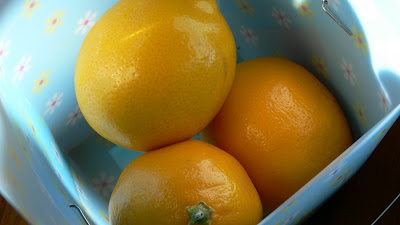 When was the last time you had a poached egg for breakfast? A poached egg on warm, buttered toast is my favourite winter breakfast; probably my favourite summer breakfast, too. The egg in the pictures struck me as being the perfect poached egg; a farm-fresh egg, cooked to absolute perfection (to my taste, anyway), served on toasted Ace bakery focaccia.
When was the last time you had a poached egg for breakfast? A poached egg on warm, buttered toast is my favourite winter breakfast; probably my favourite summer breakfast, too. The egg in the pictures struck me as being the perfect poached egg; a farm-fresh egg, cooked to absolute perfection (to my taste, anyway), served on toasted Ace bakery focaccia.I have several great memories of poached eggs. After having a tummy bug for about 24 hours in grade eight, my first meal was a a poached egg on toast, lovingly served to me on the couch, in front of the TV. There were dinners at the Chateau in France, when there were no guests to serve, and we would put together the most delicious salads you can imagine, each one topped with a poached egg and little pieces of mouth-watering bacon. And more recently, a breakfast made by my friend Elaine in Newfoundland - perfect poached eggs with buttered toast points, served in front of the fireplace, while I read some of her treasured cookbooks.
I also have other memories of poached eggs. Rubbery little discs with yolks that crumble or break off in shards when knocked with a fork. My mom, who was never really too worried about how the eggs ended up, had (and still has) a large pan with an egg poaching insert. Once my sister & I reached an age that we could make our own meals, it was only natural that we would use the poacher. Few things could set our mom off like egg cups that hadn't been sprayed with Pam - very generously - and were left "to soak" in the sink. And my mom didn't think much about the method of cooking an egg directly in boiling water either, even if we did add vinegar. Just too much mess, usually left in the sink - to soak.
 I like my poached eggs to be cooked to a certain point. I would say it's medium. It is very easy to miss that point. I don't like to have the whites of the eggs runny at all. I like the yolk to be slightly firm around the outside, but still runny enough to cover the top of the toast. Poached eggs are so very simple, yet I consider the perfect poached egg on toast to be an art form.
I like my poached eggs to be cooked to a certain point. I would say it's medium. It is very easy to miss that point. I don't like to have the whites of the eggs runny at all. I like the yolk to be slightly firm around the outside, but still runny enough to cover the top of the toast. Poached eggs are so very simple, yet I consider the perfect poached egg on toast to be an art form.For a long time, I abstained from making poached eggs. Once I moved away from home, I never did purchase my own egg poacher. When I started making poached eggs again, it took me many tries to get them the way I wanted. Even now, quite possibly hundreds of successful eggs under my belt, I do have the odd flub now and then. Just the other morning, I cracked an egg into a ramekin and the yolk broke. Instead of continuing, I put the uncooked egg back in the fridge to use for something else, and tried again. Occasionally, there will be a rogue egg that just will not stay together in the water. There is also the fine balance you must strike between keeping one eye on the egg and your other eye on the toast. I like to butter my toast as soon as it pops up, but this has led me to neglect the egg at that crucial moment, thus saddling me with an overdone yolk.
Here is my ritual for making poached eggs.
Bring a small saucepan of water to a gentle boil. Add a splash of white vinegar. Crack one very fresh egg into a ramekin and slowly let the egg slip into the boiling water. If you are cooking more than one, repeat this step. I don't like to poach more than two at a time in a small pan. Don't let the water boil too vigorously once you have added the egg. A gentle boil is good. If the egg seems to be stuck on the bottom of the pan, carefully nudge it off the bottom of the pan with a spoon. For a medium egg, it usually takes around 3 minutes or so to cook. When the egg is cooked to your liking, remove from the water and drain on a piece of paper towel. Dry well. Place on the toast of your choice and mash with a fork. Sprinkle with sea salt and freshly ground black pepper. Enjoy!




